VW Tiguan vs VW Tayron - Differences and prices compared
Costs and Efficiency:
Looking at overall running costs, both models reveal some interesting differences in everyday economy.
VW Tiguan has a clearly perceptible advantage in terms of price – it starts at 32800 £, while the VW Tayron costs 39600 £. That’s a price difference of around 6827 £.
Fuel consumption also shows a difference: VW Tiguan manages with 1.40 L and is therefore hardly perceptible more efficient than the VW Tayron with 1.50 L. The difference is about 0.10 L per 100 km.
As for range, the VW Tiguan performs slight better – achieving up to 126 km, about 3 km more than the VW Tayron.
Engine and Performance:
Power, torque and acceleration say a lot about how a car feels on the road. This is where you see which model delivers more driving dynamics.
When it comes to engine power, the has a edge – offering compared to . That’s roughly more horsepower.
In acceleration from 0 to 100 km/h, the VW Tiguan is barely noticeable quicker – completing the sprint in 5.90 s, while the VW Tayron takes 6.10 s. That’s about 0.20 s faster.
In terms of top speed, the VW Tiguan performs hardly perceptible better – reaching 242 km/h, while the VW Tayron tops out at 240 km/h. The difference is around 2 km/h.
There’s also a difference in torque: pulls stronger with compared to . That’s about difference.
Space and Everyday Use:
Beyond pure performance, interior space and usability matter most in daily life. This is where you see which car is more practical and versatile.
Seats: offers more seating capacity – vs .
In curb weight, VW Tiguan is barely noticeable lighter – 1599 kg compared to 1682 kg. The difference is around 83 kg.
In terms of boot space, the VW Tayron offers evident more room – 885 L compared to 652 L. That’s a difference of about 233 L.
In maximum load capacity, the VW Tayron performs distinct better – up to 2090 L, which is about 440 L more than the VW Tiguan.
When it comes to payload, VW Tayron slight takes the win – 566 kg compared to 533 kg. That’s a difference of about 33 kg.
Who comes out on top?
Overall, the VW Tayron shows itself to be has a very small edge and secures the title of DriveDuel Champion.
It convinces with the more balanced overall package and proves to be the more versatile choice for everyday use.
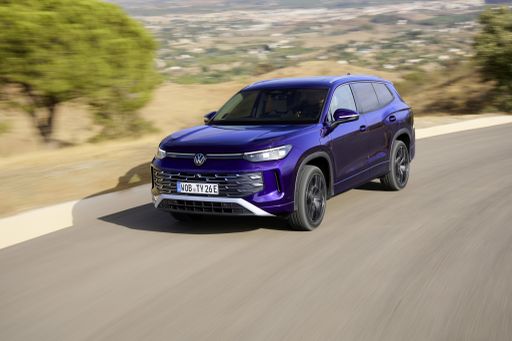 @ Volkswagen AG / VW Media
@ Volkswagen AG / VW Media
VW Tayron
Costs and Consumption
View detailed analysis
Engine and Performance
View detailed analysis
Dimensions and Body
View detailed analysis
VW Tiguan
The VW Tiguan blends sensible family practicality with a dash of German polish, delivering a calm, reassuring ride and a cabin that never feels like an afterthought. For buyers who want an SUV that’s easy to live with yet still nicely dressed, the Tiguan is the grown‑up choice that keeps a cheeky wink in reserve.
details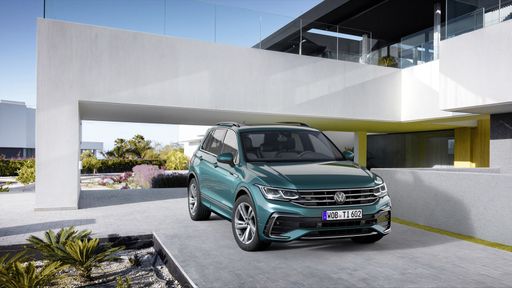 @ Volkswagen AG / VW Media
@ Volkswagen AG / VW Media
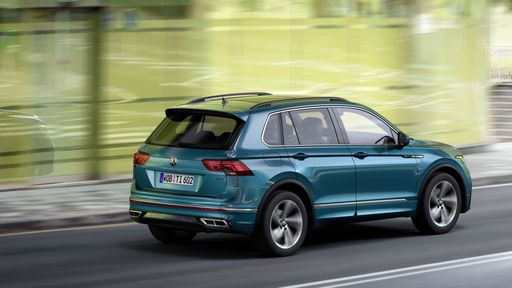 @ Volkswagen AG / VW Media
@ Volkswagen AG / VW Media
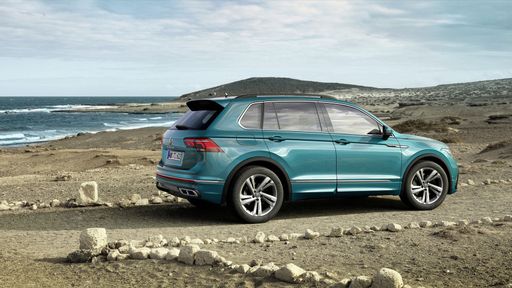 @ Volkswagen AG / VW Media
@ Volkswagen AG / VW Media
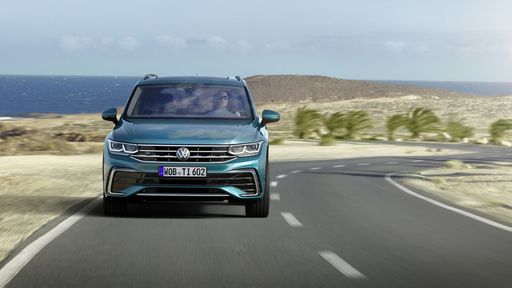 @ Volkswagen AG / VW Media
@ Volkswagen AG / VW Media
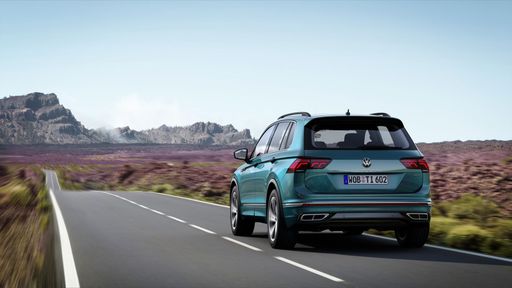 @ Volkswagen AG / VW Media
@ Volkswagen AG / VW Media
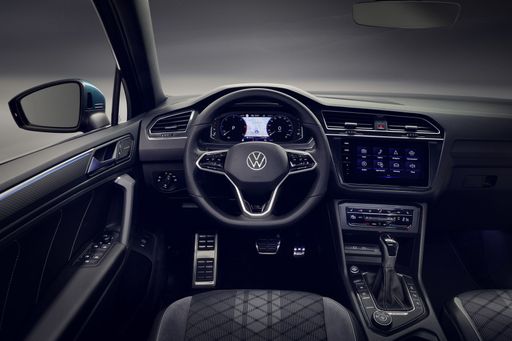 @ Volkswagen AG / VW Media
@ Volkswagen AG / VW Media
VW Tayron
The VW Tayron is Volkswagen's roomy, no-nonsense SUV that pairs clean, familiar styling with a practical cabin built for families and everyday use. It rides comfortably, packs sensible tech and creature comforts, and feels like the sensible sweater of SUVs for buyers who prefer steady value over headline-grabbing drama.
details @ Volkswagen AG / VW Media
@ Volkswagen AG / VW Media
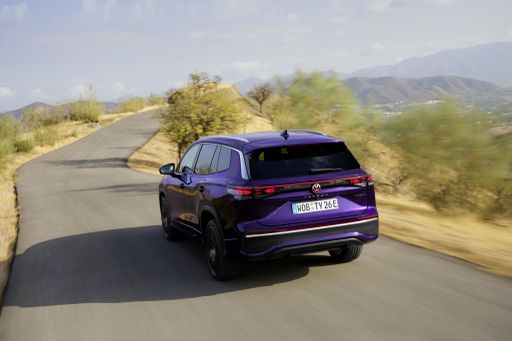 @ Volkswagen AG / VW Media
@ Volkswagen AG / VW Media
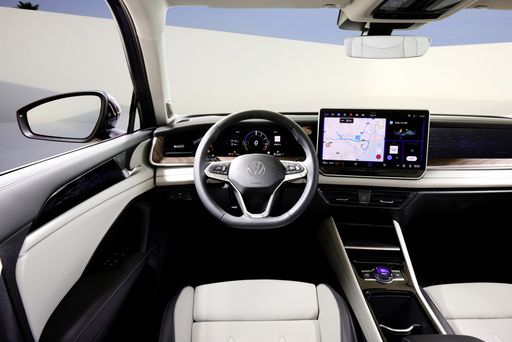 @ Volkswagen AG / VW Media
@ Volkswagen AG / VW Media
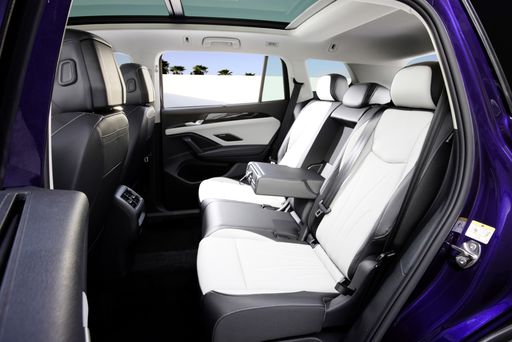 @ Volkswagen AG / VW Media
@ Volkswagen AG / VW Media
 @ Volkswagen AG / VW Media
@ Volkswagen AG / VW Media
|
 @ Volkswagen AG / VW Media
@ Volkswagen AG / VW Media
|
|
|
|
Costs and Consumption |
|
|---|---|
|
Price
32800 - 51900 £
|
Price
39600 - 53300 £
|
|
Consumption L/100km
1.4 - 8.4 L
|
Consumption L/100km
1.5 - 8.5 L
|
|
Consumption kWh/100km
-
|
Consumption kWh/100km
-
|
|
Electric Range
118 - 126 km
|
Electric Range
116 - 123 km
|
|
Battery Capacity
19.70 kWh
|
Battery Capacity
19.70 kWh
|
|
co2
32 - 190 g/km
|
co2
33 - 192 g/km
|
|
Fuel tank capacity
45 - 58 L
|
Fuel tank capacity
45 - 58 L
|
Dimensions and Body |
|
|---|---|
|
Body Type
SUV
|
Body Type
SUV
|
|
Seats
5
|
Seats
5
|
|
Doors
5
|
Doors
5
|
|
Curb weight
1599 - 1890 kg
|
Curb weight
1682 - 1948 kg
|
|
Trunk capacity
490 - 652 L
|
Trunk capacity
705 - 885 L
|
|
Length
4539 mm
|
Length
4792 mm
|
|
Width
1842 - 1859 mm
|
Width
1853 - 1866 mm
|
|
Height
1656 - 1658 mm
|
Height
1666 - 1668 mm
|
|
Max trunk capacity
1486 - 1650 L
|
Max trunk capacity
1915 - 2090 L
|
|
Payload
460 - 533 kg
|
Payload
489 - 566 kg
|
Engine and Performance |
|
|---|---|
|
Engine Type
Petrol, Petrol MHEV, Diesel, Plugin Hybrid
|
Engine Type
Petrol MHEV, Diesel, Petrol, Plugin Hybrid
|
|
Transmission
Automatic
|
Transmission
Automatic
|
|
Transmission Detail
Dual-Clutch Automatic
|
Transmission Detail
Dual-Clutch Automatic
|
|
Drive Type
All-Wheel Drive, Front-Wheel Drive
|
Drive Type
Front-Wheel Drive, All-Wheel Drive
|
|
Power HP
130 - 272 HP
|
Power HP
150 - 272 HP
|
|
Acceleration 0-100km/h
5.9 - 10.6 s
|
Acceleration 0-100km/h
6.1 - 9.7 s
|
|
Max Speed
198 - 242 km/h
|
Max Speed
204 - 240 km/h
|
|
Torque
220 - 400 Nm
|
Torque
250 - 400 Nm
|
|
Number of Cylinders
4
|
Number of Cylinders
4
|
|
Power kW
96 - 200 kW
|
Power kW
110 - 200 kW
|
|
Engine capacity
1498 - 1984 cm3
|
Engine capacity
1498 - 1984 cm3
|
General |
|
|---|---|
|
Model Year
2024 - 2025
|
Model Year
2025
|
|
CO2 Efficiency Class
G, D, E, F, B
|
CO2 Efficiency Class
E, F, G, B
|
|
Brand
VW
|
Brand
VW
|
What drivetrain options does the VW Tiguan have?
The VW Tiguan is offered with All-Wheel Drive or Front-Wheel Drive.
The prices and data displayed are estimates based on German list prices and may vary by country. This information is not legally binding.
